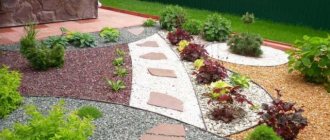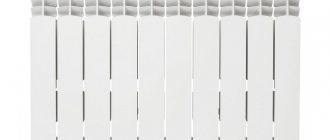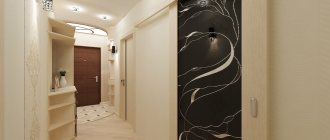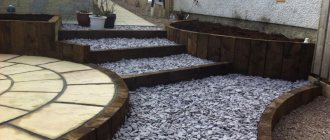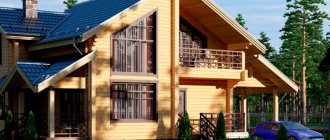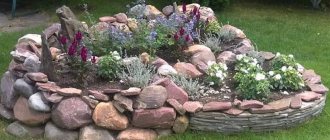The real salvation of large cities, more than filled with people and abounding in automobile transport, which have already turned into megacities, today has become urban landscape design, or, more simply, man-made vertical gardens. A beautiful flower bed, lawn or flower panel in the concrete jungle is undoubtedly a great joy for both children and adults, because living plants, as well as the water of city fountains, sparkling merrily in the sun, not only help improve mood, relieve stress, but also and perfectly purify the air.
It is known that the most common problem of city streets is the lack of space, and vertical gardens, which have recently become fashionable, help to get out of this difficult situation, since they are easy to create and dismantle, do not require special care, and also fit perfectly into any architectural ensemble.
Vertical garden on a fence
A vertical garden is a vertically located lawn (flower bed).
A vertical garden can be located in any room, on the facade of a building, or can become a kind of decoration for columns. It can also take a variety of curly shapes.
The idea of creating the now so popular vertical garden was first thought of by Patrick Blanc -
French botanist. It was he who noticed that tropical undergrowth plants are capable of growing vertically with virtually no soil, and also in insufficient light. As a result of his reflections, Patrick Blank came to the conclusion that for plants to live, it may be quite enough to provide a surface for fixing roots and a nutrient solution. Thus, an amazing opportunity has arisen for landscaping planes of any shape. We bring to your attention the simplest and easiest to implement ideas on how to make a vertical garden.
Do-it-yourself vertical garden in an apartment: which plants to choose?
Choosing plants for an indoor garden is much easier than when decorating external walls. In this case, there are no problems with temperature changes for the selected representatives of the flora. It is only necessary to organize a beautiful display and regular watering, since with large structures sometimes the water may not reach each bushing.
climbing plants
To organize a vertical garden, the best option is weaving and climbing plants:
• common ivy;
• golden scindapsus;
• cissus rhombolifolia;
• ficus;
• philodendron.
Low growing plants
Plants that do not reach a great height are an excellent choice for planting in pots. These include:
• arrowroot;
• Hypoestes phylum.
tropical plants
An exotic choice for a vertical garden would be tropical plants from the Bromeliad family. Some of the most popular representatives are:
• striped echmea;
• guzmania.
Representatives of ferns
Chic greenery of fern will decorate any apartment. There are quite a lot of representatives of this ancient group of plants:
• aliantum;
• nephrolepis;
• paronychia;
• platicerium or antler.
Plants for large walls
For large-scale designs, you can try to plant massive plants such as crotons and dracaenas. Unfortunately, after several years of growing tall plants in small containers, problems can arise. In this case, the vertical garden should be modernized.
Vertical flower beds
Walls made of living plants are an excellent solution for those who love a living corner in an apartment or house, when the dimensions of the window sills do not allow room to turn around. And even if there are already a dozen pots with pets on the windows, one or more verticals around the house will not be superfluous. A living wall is not only an interesting design move, but also an opportunity to improve the microclimate, as well as get fragrant greens to the table that have not crossed the ocean in a chemical cocoon. Bulk pots and containers take up a lot of space, and a small vertical rack with containers will accommodate more “guests”, requiring virtually no usable space.
Living walls can be both indoor and outdoor - in the first case, the system is intended only for home placement, in the second, the module can be exposed to the street or placed directly on the facade of the building. Indoor living walls come in several types:
- Modular.
- Felt.
- Containerized.
Modular phytowalls are assembled from several ready-made elements sold in specialized stores. They are a frame on which are usually fixed flat containers with a substrate, divided into planting cells. The modules are also equipped with an automatic watering system, but despite all the convenience, this is quite an expensive pleasure, even if you buy blanks and plant them yourself, not to mention walls completely covered with plants. However, it is from the modules that living pictures are most often formed, selecting flowers or greenery by color and texture. If you have a rich imagination, you get almost picturesque canvases, but not painted, but composed.
Vertical gardening with felt is more accessible; pockets made of special fabric are fixed onto an impermeable base, for example, plastic or wood, covered with film - it holds the substrate well, allows water to pass through and does not rot. Tanks are installed below to collect excess water. Watering can be automatic, such systems are also not uncommon on sale, or homemade, drip type. As an option, felt pockets are sewn onto a fabric base and pulled over the frame; such walls are double-sided and can be used as full-fledged screens. The base must be strong to withstand wet soil and filling.
Container living walls are essentially shelves with pots or any other containers mounted on them, but the plants are selected with a large foliage mass to hide the base. An interesting option for making a container wall is made from drainage boxes. Several sections with plugs are fixed together, filled with soil and planted with greenery. Wooden homemade boxes, divided into square cells or transverse containers, also go well with plant mass.
Vertical gardening and gardening procedures on the wall
Plants grown on the wall of an apartment require a little more care than with the traditional type of planting. Vertical vegetation is primarily planted in small containers, which have less room to grow, competing with each other for light. The simplest irrigation is usually automatic. You can also fertilize in a similar way. The disadvantage of the solution is the homogeneity of the procedures, with different needs of each species of flora. Plants planted in a vertical garden should be moistened regularly, especially in summer. During planting, mini-reservoirs can be added to the base to make water easier to access.
A vertical garden is an interesting way to decorate your interior with living plants. You can design a small green composition on the wall yourself. Take advantage of practical tips on how to create a vertical garden at home thanks to the information and photo examples in this article.
Homemade plant paintings
In addition to paintings from modules, homemade “canvases” are popular, based on a wooden frame, plywood bottom and a metal mesh with a fine mesh as a limiter. The bottom is stuffed onto the frame, a thick polyethylene film is used as a waterproofing material, and perlite is added to the soil for planting. To protect against spillage of the substrate before the root system of the seedlings grows, agrotextiles can be nailed on top of the soil, in front of the mesh, and slits can be made in the cells under the seedlings. If moss (sphagnum) is used as a substrate, only a mesh is sufficient.
Plants are planted according to the chosen plot. If it is just an abstraction, several accents are made due to bright colors or sizes, and the main canvas is filled with a mass of small leaves. In order for the root system to strengthen, the frame must stand horizontally for at least two weeks, after which it can be hung. After hanging, watering as such is reduced to spraying. Thanks to abundant initial watering, perlite accumulates a large amount of moisture and subsequent spraying is sufficient to maintain an optimal balance.
Useful properties of a winter garden
What is a winter garden in an apartment and is it important for modern people? Despite being very busy and constantly lacking time, people spend a significant part of their lives in their homes. And that’s why everyone wants them to be cozy. If the microclimate is still suitable, it will become much easier for residents of huge megacities to perceive the reality around them - high-rise buildings made of monolithic reinforced concrete glass and metal reaching into the sky, and an endless stream of cars on the roads.
And if you make winter gardens in apartments with your own hands, they will certainly please their owners with the following properties:
- improves your mood and gives you the opportunity to feel a pleasant feeling of peace;
- normalizes the functioning of the central nervous system;
- will relieve depression.
People who surround themselves with indoor plants are positive and welcoming. They are always happy to communicate and give all their interlocutors sincere smiles.
Where to organize a phytowall?
Any vertical garden wall is visually very attractive. And many, having seen photos of its options on the Internet, get excited about the idea of implementing something similar at their own dacha. However, experts advise that before arranging anything, you should soberly weigh your own strengths, because the installation and care of a particular living structure can be prohibitively difficult.
However, anyone can probably take care of a vertical garden. The main thing is to choose the type of system not only according to your taste, but also according to your own capabilities.
A novice summer gardener will be able to do it, for example, with the option “on the fence” or with mobile containers on a specially equipped wall. In these cases, if for some reason you don’t want to or can’t successfully start a vertical garden, you can abandon it without any problems or big losses.
An experienced plant grower who constantly lives on the site can easily master even larger forms - say, landscaping the entire artificially created vertical wall.
Useful tips
Vertical garden of honey plants
- The main thing when creating such a garden composition is the correct selection of plants with similar conditions.
- If the flowering lawn will be located in the open air, then preference should be given to mosses, alpine flowers and lichens, that is, plants adapted to temperature fluctuations and various precipitation.
- When creating a vertical garden, do not just choose the plants you like to create the composition you have come up with, but select plants taking into account the existing style of the interior, then harmony will be visible in everything.
- Even before you start creating a flower bed or panel, be sure to determine the location of your masterpiece, the level of illumination of the chosen place, the method of installing the structure and its approximate weight. It is necessary to take into account all the nuances.
Creating a vertical garden yourself, as you can see, is not at all difficult, although it is somewhat troublesome and painstaking. But after finishing your work, you will be able to admire for a long time the natural beauty of the flower paintings created by your own hands. Just remember to water them regularly.
We recommend that you read the following articles:
- DIY landscape design of a summer cottage;
- how to make a dog house with your own hands.
Advantages and disadvantages
In addition to the fact that a vertical green wall takes up little space and has a unique landscaping effect, several more advantages can be identified:
- Air quality improves. This works provided that the plants are carefully monitored and care requirements are followed. The room is enriched with oxygen, especially if tropical plants grow in the house.
- Unique design. A living wall in a living space looks impressive and catches the eye. Therefore, the room is transformed significantly. This effect quickly enlivens any space.
- A plant wall helps save thermal energy. After all, a large wall tends to accumulate optimal temperature around itself.
The disadvantages of landscaping include:
- the need to constantly refresh and feed plants;
- you need to choose plant varieties of approximately the same size;
- it is necessary to constantly care for the leaves (remove dust).
In general, caring for green garden vegetation at home is not difficult.
Fluffy living wall in the house from different indoor plants Source roomester.ru
Recipes for Beginners
The simplest type of phytowall is considered to be a “pocket” vertical garden. Today, in any specialized gardening store you can purchase a canvas made of polymer textiles, already equipped with pocket sections for seedlings. The material is durable and perfectly holds the weight of the soil, at the same time it perfectly allows water to pass through, which means that all the necessary conditions for effective crop production are created.
All kinds of herbs (spicy, ornamental), as well as some flowers, look especially good in a “pocket” vertical garden. It will turn out very beautiful if you choose plants of different shades that harmoniously combine with each other.
Microcomposition by simple means
A miniature hanging composition can be built outdoors and at home if there are several “free” potted plants. The containers should be placed on several levels.
To create such a mini-garden you will need:
- 6 flat wooden planks;
- 6 round slats (also wooden);
- pieces of cable or strong ropes;
- metal hooks;
- plants in flower pots.
In each plank you first need to make 2 holes - one at each end. The diameter of such holes should correspond to the diameter of the wooden slats. Next, the slats will need to be inserted into the planks and secured securely. And then connect all three levels of suspensions with a cable or strong rope into a single, fairly stable structure.
Using metal hooks, the suspension must be secured to a wall, fence or under the ceiling of the gazebo. All that remains is to place the potted plants on the level boards and that’s it - the vertical garden composition is ready.
Important: When designing a simple phyto-hanging, you should remember that the pots at each of its levels must be the same diameter.
In which room can it be used?
Vertical gardening done with artificial grass is suitable for decorating any room. In the nursery, you can use synthetic grass of emerald color and place flowers, butterflies, and dragonflies on it.
In the living room, a phytowall will definitely attract the attention of guests. In the bedroom, made of delicate shades of green, it will promote relaxation and rest. And when you wake up and see a “corner of nature” in front of you, you can recharge yourself with positivity for the whole day.
Artificial grass can be used to decorate the walls of the entrance area or corridor. It is logical that artificial turf will also look good as an element of vertical landscaping on a balcony, loggia or veranda.
How to create a vertical mini-garden quickly?
This option can be a wonderful decoration for a garden, apartment or balcony. To make a hanging vertical garden , you will need:
- 3 gutters;
- steel cable;
- plugs for gutters;
- clamps;
- hooks;
- semicircular steel rods;
- soil for plants;
- self-adhesive tape.
Making the design will not take much time.
- Make holes in the gutter for drainage, drill two holes of smaller diameter on each edge - a steel cable will be inserted into them.
- Apply self-adhesive tape to the inside.
- Pass the cable through the holes and secure with clamps. Before this, insert a steel rod into the clamp; it will securely hold the structure.
- Choose a place where the garden will be located, secure the hooks. The distance between them should be equal to the gap between the cables. Otherwise, the structure will hang unevenly.
- To make the second and third levels, steel cables are passed through several gutters.
- Place expanded clay and stones at the bottom for drainage, then pour out the soil and you can start planting.
Which synthetic grass should you choose?
Manufacturers of rolled lawns offer a fairly wide range of products, both in texture and color. High-quality ornamental grass is visually difficult to distinguish from natural grass. It can imitate moss, grasses, and ground cover plants.
As for color solutions, the choice of artificial grass is so wide that it allows you to keep up with global trends in interior design and use fashionable shades of not only green, but also terracotta, yellow, brown and others. These can be both complex, rich colors and delicate, pastel ones: mint, bottle green, mustard, straw. The main thing is that it should immerse a person in the natural world, reduce stress levels, and bring freshness to the interior.
These artificial grass colors will harmonize well with wooden or light wicker furniture, cork flooring, floral prints on textiles, and bamboo or clay dishes. The natural style will be “supported” by accessories made from natural materials: baskets, vases, storage boxes. You can place an aquarium against a wall covered with artificial turf.
Methods for vertical installation of grass
Preparatory work includes cleaning the wall from old plaster, old wallpaper and other decorative coatings. The next stage is primer. It must be suitable in composition for a two-component special adhesive for installing artificial grass.
The wall must be generously coated with glue. The process of gluing a rolled lawn is almost no different from gluing ordinary wallpaper. An important point: the joints of the canvases must be taped with specially designed double-sided tape.
For reliability, you can additionally secure the canvas with invisible staples.


